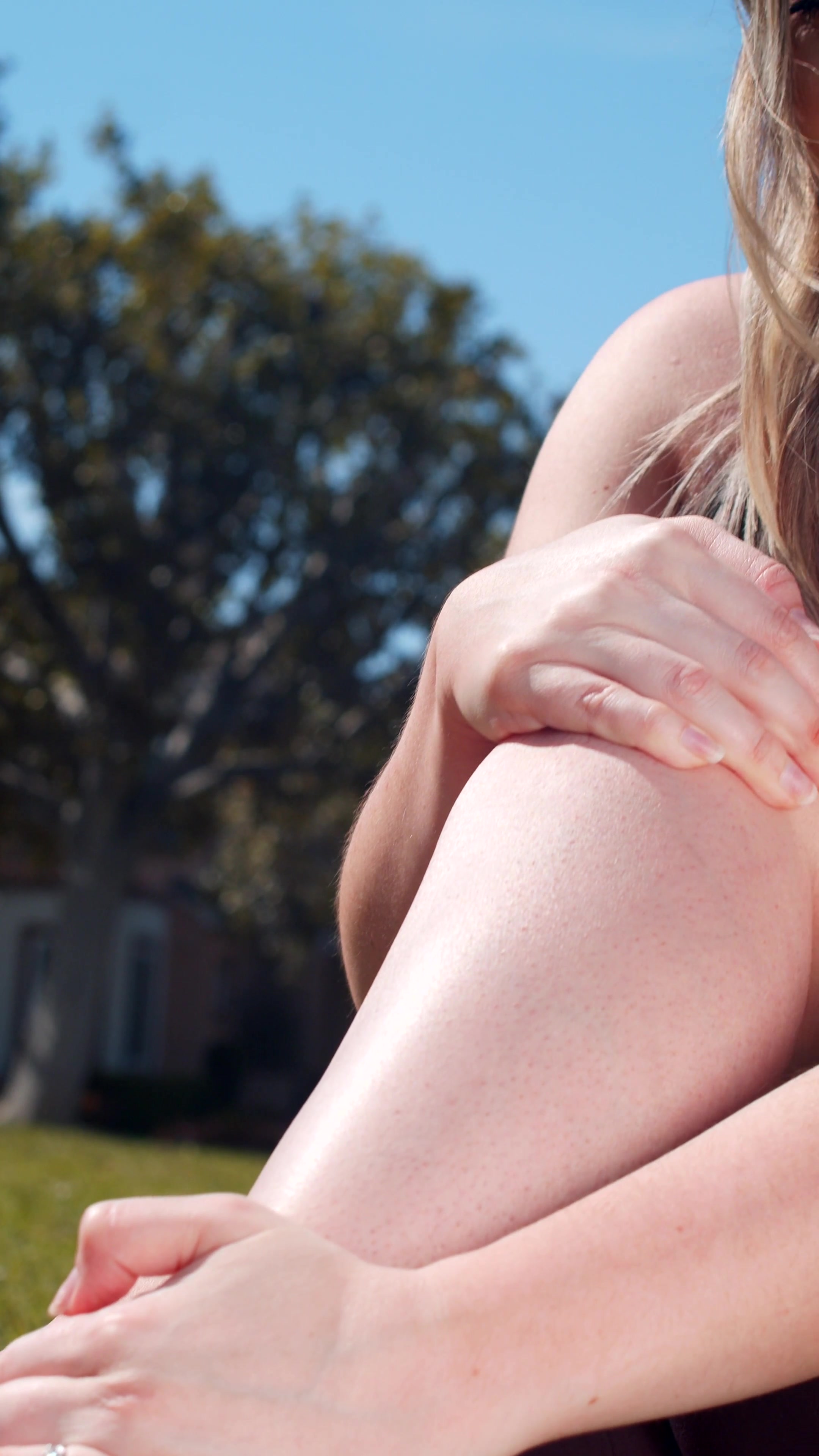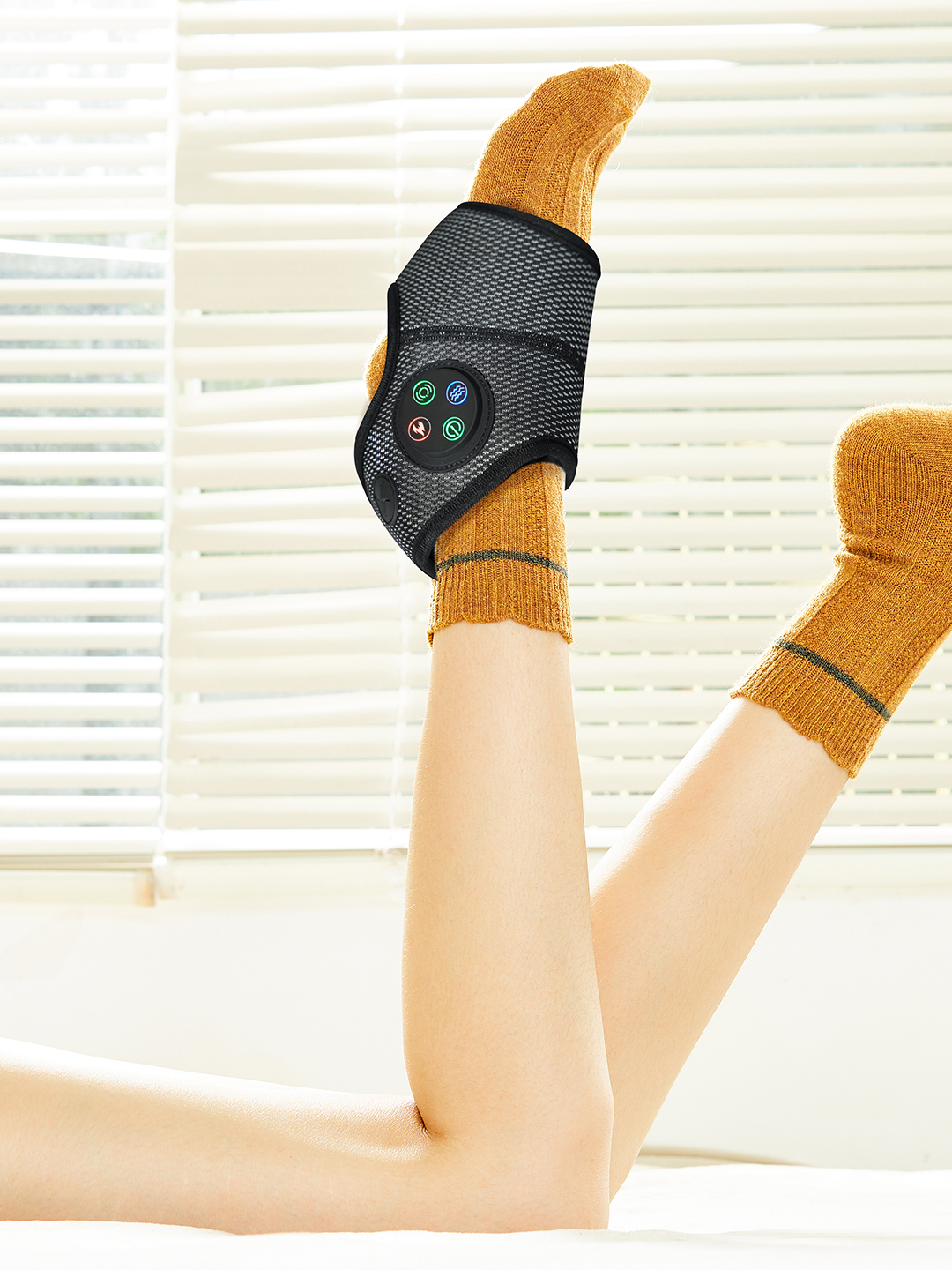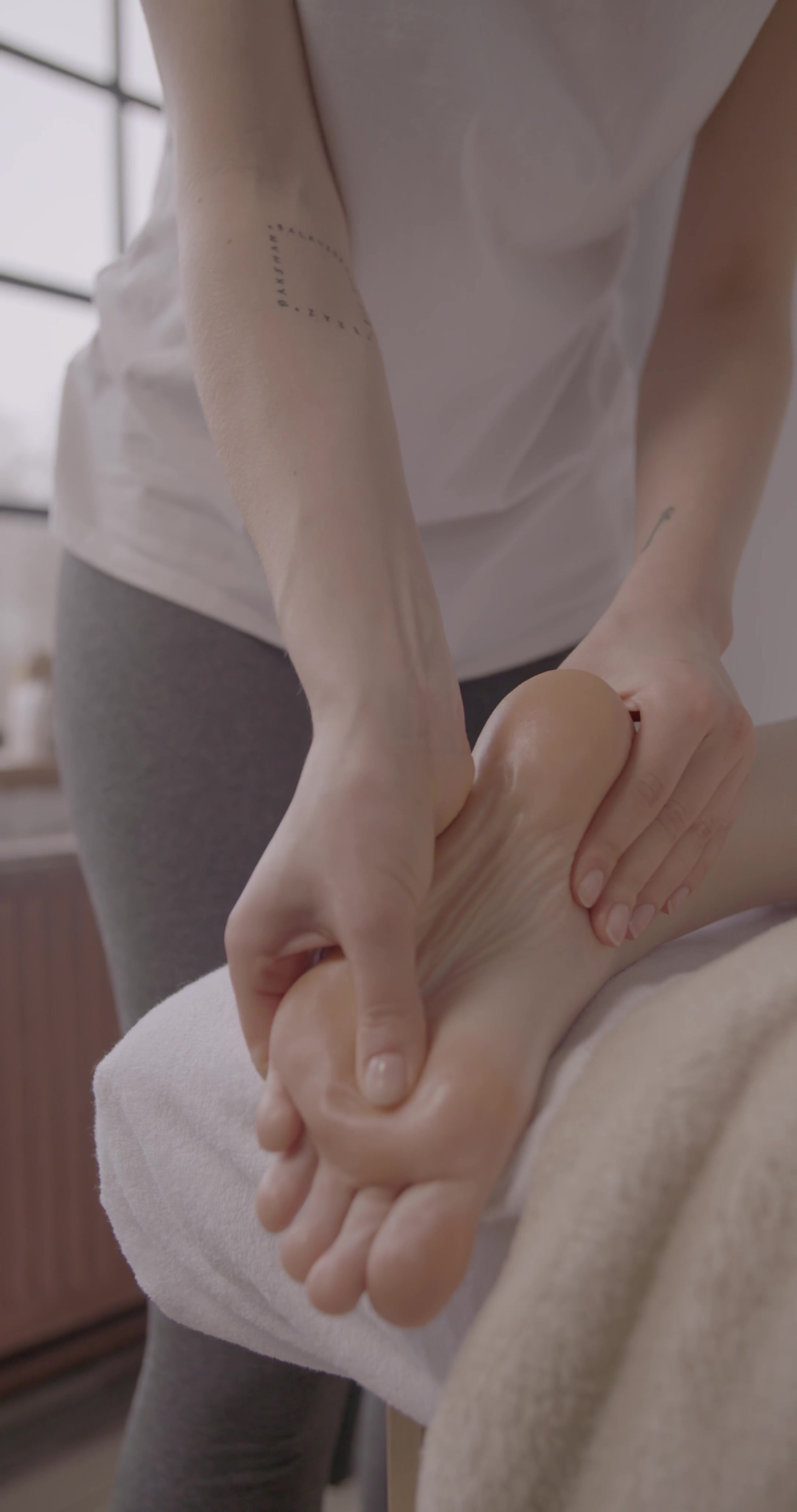Foot Massage for Neuropathy: Does It Really Work?
- By Grace
- Updated on
reflexology foot massager / massage techniques / best foot massager for neuropathy
Ah, foot pain. If you've ever experienced it, you know it's not just uncomfortable; it can truly hijack your day, making even simple tasks feel like climbing Mount Everest. But when that pain stems from something as tricky as neuropathy, the search for relief can feel like a never-ending labyrinth. As a health product review expert with years in the industry, I've seen countless gadgets and gurus claim to hold the magic wand. Today, let's cut through the noise and talk about something many are turning to: the humble, yet surprisingly powerful, foot massager.
You might be surprised to find out that estimates suggest millions of people grapple with neuropathic pain globally, significantly impacting their quality of life. Is there a gentle, non-invasive way to soothe those jangled nerves? Can a regular foot massage truly make a difference? I believe the answer is nuanced, and we're about to dive deep into it, exploring not just devices, but a holistic approach to managing that stubborn foot pain.

Core Pathological Mechanism of Neuropathy: Unraveling the Nerves' Tangled Web
So, what exactly is neuropathy? Simply put, it's nerve damage. Imagine your nerves as intricate electrical cables carrying messages between your brain and your body. When these cables get frayed, twisted, or completely cut, those messages get scrambled, or don't get through at all. This can lead to a symphony of confusing symptoms: numbness, tingling, weakness, or that persistent, often burning, foot pain.
What causes this nerve chaos? Diabetes is a big culprit, often leading to diabetic neuropathy, but it can also be triggered by injuries, infections, toxins, vitamin deficiencies, or even certain medications. The challenge is that once a nerve is damaged, it's not always easy to fix. That's why traditional pain management often focuses on symptom relief rather than a complete cure. But can something as simple as a foot massage offer a glimmer of hope?
Actually, scientific understanding, as evidenced by institutions like the National Institute of Neurological Disorders and Stroke, points to the complexity of nerve regeneration. While a definitive cure for all forms of neuropathy remains elusive, managing symptoms is key to improving daily life. And that's where exploring various interventions, including complementary therapies, becomes crucial. But how does foot massage fit into this intricate picture?
Foot Massagers & Beyond: A Comparative Look at Foot Pain Relief Options
Navigating the options for foot pain relief, especially for neuropathy, can feel overwhelming. As your health product expert, I've categorized the popular approaches to help you make an informed decision. Let's compare the efficacy and applicability of these solutions, from high-tech gadgets to ancient massage techniques and modern medicine.
The Allure of the Multi-functional Reflexology Foot Massager: The Klcosy Model and Beyond
Many individuals grappling with persistent foot pain have found surprising solace in multi-functional devices. Take the Klcosy model, for instance, which is often lauded for its four-in-one combination: air compression, kneading, heat, and vibration. The principle behind such a reflexology foot massager is to stimulate pressure points and improve local blood flow, much like traditional foot massage but automated. It's safe and easy to use, making it an attractive option for at-home care.
Who is this for? Primarily, individuals seeking non-invasive, daily relief from mild to moderate foot pain or tingling associated with neuropathy. It's fantastic for those looking to supplement their primary medical treatment or simply enjoy a relaxing way to unwind and improve circulation. The adjustable modes allow for a personalized experience, catering to different sensitivities. Many users report that these automated devices offer a convenient way to integrate regular foot massage into their routine, often leading to a noticeable alleviation of symptoms like stiffness and discomfort.
While specific quantitative data on the Klcosy model's impact on neuropathy is limited, anecdotal evidence from user testimonials often points to improved comfort and reduced perceived pain. Think of it as a daily dose of relaxation that can help ease the nervous system's reactivity, potentially making life with neuropathy a bit more bearable. Is it a cure? No. But a worthwhile tool in your arsenal? Absolutely, for many.

When to Call the Pros: Medical Interventions for Persistent Foot Pain
Despite the comforts of a foot massager, there are times when medical intervention isn't just an option—it's a necessity. Skeptics, and indeed medical professionals, correctly advocate for drug treatments and physical therapy for significant neuropathic pain. Medications can range from over-the-counter pain relievers to prescription drugs specifically designed to target nerve pain, like certain antidepressants or anti-seizure medications.
This approach is typically suited for individuals with diagnosed, severe, or rapidly worsening neuropathy where home remedies or foot massage alone are insufficient. Physical therapy might involve percutaneous electrical nerve stimulation (PENS), exercises to improve balance and strength, or specialized massage techniques performed by a licensed therapist. These interventions are clinically proven and can offer substantial relief, but they often come with potential side effects, requiring consistent monitoring by a healthcare provider. The cost can also be a factor, though often covered by insurance for medically necessary conditions.
To be honest, it’s crucial to remember that medical professionals have the tools to diagnose the underlying cause of your neuropathy and tailor a treatment plan that addresses the root of the problem. While a good foot massager can provide comfort, it doesn't replace the need for professional medical assessment, especially when symptoms are severe or progressive. Don't you think it's always best to have a doctor's input?
Lifestyle as Medicine: Diet, Exercise, and Holistic Massage Techniques
Beyond devices and prescriptions, the power of lifestyle changes cannot be overstated, especially when it comes to managing conditions like neuropathy. For instance, if your neuropathy is linked to diabetes, meticulous blood sugar control through diet is absolutely paramount. Eating well-balanced meals, limiting processed foods, and maintaining a healthy weight can significantly slow nerve damage progression and sometimes even improve symptoms.
Regular, gentle exercise, such as walking or swimming, also plays a critical role. It improves circulation, which is vital for nerve health, and can help manage pain by releasing endorphins. Plus, specific massage techniques focusing on stretching and gentle manipulation can be learned and applied manually, offering a complementary approach. This might include light effleurage or kneading, focusing on comfort rather than deep pressure.
This non-device approach is truly foundational for anyone, regardless of their neuropathy's severity. It empowers you to take an active role in your health and can work synergistically with other treatments, including using the best foot massager for neuropathy you can find. It’s a long-term commitment that yields long-term benefits for overall well-being, influencing everything from foot pain levels to overall energy. Think of it as cultivating a garden: you can't just plant seeds and hope for the best; you need consistent care.
Professional Recommendations: Navigating Your Foot Pain Relief Journey
As a health product expert, my advice is always to approach foot pain relief with a balanced perspective. When is it okay to rely on your new foot massager for daily soothing, and when do you need to seek professional help? It’s a question I get asked a lot!
For mild to moderate foot pain, especially if it's related to fatigue, poor circulation, or simply a long day on your feet, a foot massager can be a fantastic daily companion. It offers relaxation, can help improve local blood flow, and provides temporary relief. If your neuropathy symptoms are stable and you're just looking for an adjunct to your current medical plan, or if your doctor has given the green light, then consistent foot massage at home can be very beneficial. It's truly empowering to have a tool that helps you manage discomfort on your own terms.
However, if your foot pain is severe, worsening rapidly, accompanied by new weakness, loss of sensation, or open sores that don't heal, it's time to put the best foot massager for neuropathy aside and consult your doctor immediately. These are red flag symptoms that require professional medical attention to diagnose the underlying cause and prevent further damage. Remember, while a foot massager can be a great comfort, it's not a diagnostic tool nor a substitute for medical expertise. Your health is your most valuable asset, so protecting it with expert guidance is paramount. Don't you agree?
FAQ about Foot Massage for Foot Pain
Let's tackle some of the most common questions I hear about foot massage and its role in managing foot pain, especially concerning neuropathy.
How to massage foot?
Knowing how to massage a foot can seem daunting, but it's simpler than you think! If you're using a device like a reflexology foot massager, the machine does most of the work. Just place your feet in, select your preferred settings (heat, intensity, mode), and relax. For manual massage techniques, start with gentle strokes (effleurage) using warm lotion. Then, use your thumbs to make small circles or apply gentle pressure on the arch, ball, and heel of the foot. Pay attention to areas that feel tense or sore, but never apply pressure that causes sharp pain. Always use smooth, consistent movements, and remember to include the toes and ankles. You can even use small, firm balls (like a golf ball or lacrosse ball) to roll under your foot for self-foot massage, focusing on trigger points.

Does foot massage help circulation?
Yes, absolutely! One of the primary benefits of a good foot massage, whether manual or using a foot massager, is its positive impact on circulation. The kneading, rolling, and air compression features of many devices, or the friction and pressure from manual techniques, help to stimulate blood flow. This increased circulation delivers more oxygen and nutrients to the tissues in your feet, which is incredibly beneficial, especially for those with conditions like neuropathy where circulation can be compromised. Better blood flow also aids in the removal of waste products, which can reduce swelling and discomfort. So, yes, if you're asking, "Does foot massage help circulation?", the answer is a resounding yes!
Can diabetics use foot massagers?
This is a critical question, and the answer is usually yes, but with a significant caveat: always consult your doctor first! Diabetics often experience diabetic neuropathy, which can lead to reduced sensation in the feet. This means they might not feel if a foot massager setting is too intense or if it's causing irritation, leading to potential skin damage or injury. However, for many diabetics with stable neuropathy and good foot health, a gentle foot massager can indeed help improve circulation and provide comfort. The key is to use it at a low setting, avoid excessive heat, and regularly inspect your feet for any signs of redness, sores, or irritation. If you have open wounds, severe neuropathy, or any concerns, please, please talk to your healthcare provider before using any foot massager or engaging in new massage techniques.




